1968 Lotus Super Seven Reviews
You'll find all our 1968 Lotus Super Seven reviews right here. 1968 Lotus Super Seven prices range from for the Super Seven to for the Super Seven .
Our reviews offer detailed analysis of the 's features, design, practicality, fuel consumption, engine and transmission, safety, ownership and what it's like to drive.
The most recent reviews sit up the top of the page, but if you're looking for an older model year or shopping for a used car, scroll down to find Lotus dating back as far as 1961.
Or, if you just want to read the latest news about the Lotus Super Seven, you'll find it all here.
Lotus Reviews and News

Victory by Design Lotus Eleven
Read the article
By CarsGuide team · 13 Jan 2012
The space framing was revised which made it lighter, and when Team Lotus headed to LeMans in 1956 they won the race in their class with this quicker model.
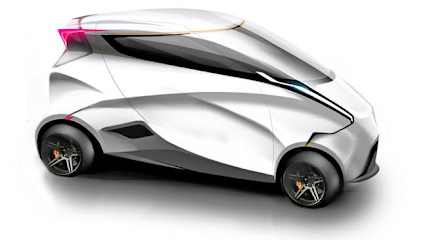
Lotus taking big steps on small cars
Read the article
By Karla Pincott · 28 Dec 2011
The Proton-owned company aims to target the luxury small vehicle market with the City Car priced to battle the status and price of the Aston Martin Cygnet, and has followed that up by unveiling a World Vehicle Concept.
Lotus recently announced its City Car would go on sale in the UK priced at around £2000 cheaper than the Cygnet – so somewhere under the equivalent of $45,000. And it says the World Vehicle Concept.would cost less than $10,000 if it ever came to market.
It will also follow Aston’s rebadging example (the Cygnet is a Toyota iQ under the skin), with the City Car going on sale first as a Proton and later as a Lotus. It will be based loosely on the Ethos Concept seen at Paris motor show with an electric motor coupled to a 1.3-litre three-cylinder Lotus engine that will serve as a range extender – recharging the lithium-ion battery bank but never directly providing drive to the wheels.
While the City Car is slated for sale in 2014, the World Vehicle Concept is for the moment just a computer-generated illustration of how Lotus imagines a high-volume, low-cost set of wheels.
A report in Automotive Engineering International cited Lotus Engineering North America CEO Darren Somerset as saying the concept could be an answer to the wave of vehicles expected to come from China and possibly India.
"You can see the proliferation of Chinese OEMs and Indian OEMs right now, so we believe there's going to be a big influx of very-low-cost cars into the US and into the European markets,” Somerset says in the AEI interview.
“For all traditional OEMs, the way to offset the volumes that they'll lose will be to find very unique and clever ways of using technology to produce vehicles that are low cost in their own right. “This concept represents a fun-to-drive, low-cost, back-to-basics commuter car that provides a practical, high-volume solution for reducing greenhouse gas emissions and improving fuel efficiency," said Somerset.
The ultra-compact is packaged as a four-seater, but in a 1+2+1 configuration over three rows, with the rear wheels powered by a mid-mounted 37kW two-cylinder shaft-driven engine -- rather than a hybrid or electric.
"If you have a carryover vehicle and you're trying to improve fuel efficiency and reduce emissions, a hybrid-electric application can do that. But it will also push the price of the vehicle up. What we're saying is for a ground-up product, start with the basic physics of engineering. And then optimize each area of the car that ultimately influences fuel efficiency and emissions," Somerset says.
He indicated that if put into production, the car would aim to be competitive against Chinese and Indian vehicles, and likely have a price under $10,000.
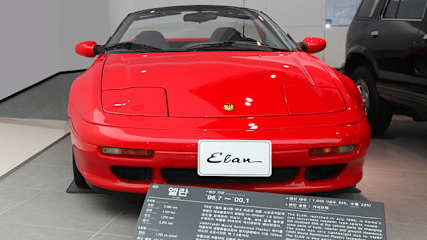
Lotus reveals Kia link
Read the article
By Bill Buys · 24 Nov 2011
Lotus, the sports and racing cars developed by Colin Chapman, was as British as a chip butty. So why is a Lotus Elan on display in the museum at Kia's R and D centre at Namyang, South Korea?
Turns out Kia bought the licence to make the famous sports car after Lotus stopped building the Elan in 1995. So the red sports car in the museum really was, as its badge said, a Kia Elan.
But unlike the original with a Lotus-Ford twin-cam 1558cc engine, or later models which used a 1.6-litre Isuzu motor, the Kia Elan was a home-spun 1.8-litre. It had a 113kW 'Hi-Sprint' 16-valve twin-cam engine of its own design, a lightweight reinforced plastic body and a five-speed gearbox. The neat two-seater could get to 100km/h in 7.4seconds and had a top speed of 220km/h.
The first one came off the line was in July, 1996, but at W27.5million (about $30,000) the Elan was an expensive beastie at the time, and production stopped three years later after about 2000 were built.
Still, it has the distinction of being Korea's first sports car and boasted 85per cent local content. They were sold only on the Korean domestic market.
Kia started producing bike parts in 1944, built motorcycles from 1961 and started building and exporting light trucks (to Qatar) in 1974.
Today it is Korea's second biggest car maker, for the past 30 years sole supplier of military vehicles to its army and a major exporter of cars, buses, trucks and military vehicles.
This year Hyundai-Kia, which has a world-wide workforce of 120,000, will sell 2.3 million vehicles and earn $53 billion. And Lotus, after a romance with General Motors, is now owned by Proton.

Lotus Exige S launched
Read the article
By Neil Dowling · 14 Sep 2011
The new Lotus Exige S, launched at this week’s Frankfurt motor show and in Australia early next year, picks up the Evora’s supercharged V6 engine and shoehorns it into the refreshed Exige’s 1080kg body. But the engine - a major upgrade on the 1.8-litre base engine - is only one of the Exige’s highlights.
“It’s a lot less like a toy,’’ says Lotus PR head Alastair Florance. The redesign has made it look bigger and more aggressive.’’
It opens the door to the Exige R-GT which is Lotus’ new rally entrant. “There is a need to go back to rallying,’’ Florance says. It is necessary. We’ve been so successful in every motorsport arena - Le Mans to Indy, Formula One to rallying.’’
The R-GT goes for a shake-down year in 2012 and is expected to hit the circuits in 2013. It will participate in the newly-formed FIA GT category of the FIA Rally Championship on asphalt in San Remo, Tour de Corse and Monte Carlo.
It gets the same 3.5-litre V6 engine as the Exige S but Lotus has made “significant’’ changes to the gearbox and the restrictors in the engine, Florance says. Lotus also showed its Evora GTE and has been stunned by demand.
“We had plans to build a road car off the back of the GT racer and so the GTE was born,’’ Florance says. We planned 25 units at about (the equivalent of) $150,000 each. Immediately, we had 114 orders from China. So we’ve raised the production.’’
Other Lotus cars on show included a new Elise CR (club racer) with a 1.6-litre engine and robotised manual gearbox with steering wheel paddles; the Elise S that picks up a supercharged engine for 165kW/250Nm and a 0-100km/h time of 4.6 seconds.
But following some notes in Carsguide recently about the Evora’s perceived quality, Mr Florance says big steps had been taken to improve the car.
The results will be seen in the next shipment to Australia, but essentially there were 140 changes. “They’re small, but in total make a big difference,’‘ he says.
They include improved leather interior trim with extra padding in the door insets and the seats, contrasting double stitching of the leather dashboard and improved door mechanisms. Lotus also showed its fuel-cell London taxi on which it did engineering work. A few of the cars will do duty as a taxi during the 2012 London Olympic Games.
There was also the Evora 414E hybrid that has two electric motors producing 310kW/800Nm fed by lithium ion batteries that are charged by a Lotus-Fagor range extender engine.
Lotus has designed two Fagor-built engines - a three-cylinder as fitted to the 414E - and a new two-cylinder unit that is more compact and can be mounted in virtually any position to power a battery pack. The sole 414E is regarded as a demonstrator but Lotus says it is keen to get more built for the road.

Porsche Cayman S vs Lotus Evora S
Read the article
By Neil Dowling · 29 Aug 2011
Porsche Cayman S and Lotus Evora S go head-to-head in this comparative review.
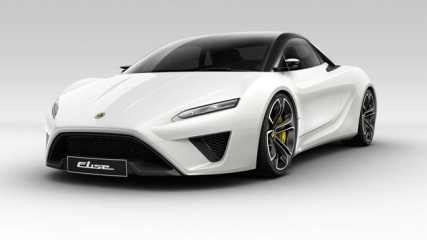
Lotus Elise cuts $17k off price
Read the article
By Craig Duff · 19 Aug 2011
The British-built sports cars are famous for their giant-killing reputation, supercar performance for a fraction of the price, and new importer Ateco is working both fronts.
The company's first step has been to leverage the Aussie dollar's strength against the pound to make effective price cuts of up to 20 per cent. The base model Lotus is now $2000 cheaper at $67,990 while the supercharged SC is now just $77,990, a saving of $17,000.
The performance has also been tweaked with all Elise vehicles now loaded with the previously optional sports pack valued at $6000. It consists of twin oil coolers, Bilstein dampers; Y spoke forged alloy wheels and ProBax sports seats.
It's all good news for new owners but not much consolation to the 10 Elise buyers this year who paid up to $94,990 for the privilege of putting a Lotus in their garage.
Lotus Australia general manager Glen Sealey sympathised but noted pricing had been set by the previous importer.
"We officially became the Lotus importer this month and we've overhauled the entire structure," he said. "The first-year plan is to double sales to 100 vehicles . getting volume on to the streets helps establish a presence. We're looking at the Lotus brand equity to see just where it fits into the market. The Lotus name has global appeal, it is a case of working out where to position the models."
Sealey wouldn't comment on the previous pricing of the Lotus models in Australia but said Ateco's business case was based on increasing volume and realigning prices to Lotus's natural competitors.
"We'll re-launch and re-price the Evora," he said. "The other two name plates (Elise and Exige) are established and in some ways look after themselves but the Evora is where we see the potential for big volume growth. First we had to determine where it sits against the likes of Porsche and we've now adjusted the model mix to have the Evora S and (automatic transmission) IPS.
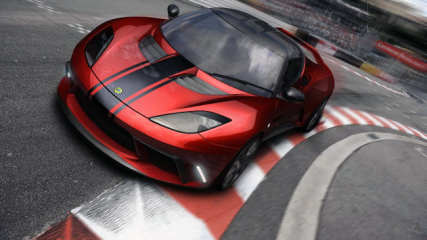
Lotus Evora GTE Road Car Concept
Read the article
By Neil Dowling · 18 Aug 2011
... at the world's leading classic and performance car event, the Pebble Beach Concours d'Elegance in the US.
Lotus says the concept is a road-going version of its planned entrant into the new global motorsport GTE category, which includes the Le Mans 24 Hours. The hot Evora runs a 315kW-plus engine that mates to a sequential AMT racing gearbox. Wheels are ultra-lightweight forged alloys with centre-lock hubs shod with Pirelli P-Zero Corsa tyres.
"The Evora GTE Road Car Concept isn't merely a paint scheme or homage to a race car - this is a serious race car that makes for a very serious road car,'' says Lotus.
The GTE Concept will this week be shown within the Lotus exhibit at Pebble Beach this week before being moved onto the Concept Car Lawn for display throughout the remainder of the weekend.
It's black and mean and not coming to Australia. The Exige Matte Black Final Edition - which does exactly that: marks the end of an era of Exige production - has a power upgrade to 190kW, an exclusive matte-black paint finish, black Alacantara sport seats and a higher level of standard equipment.
Only 25 examples of this Exige will be built, each with their own numbered plate, which Lotus says will help make these cars instantly collectible.

Rapper spins for Lotus
Read the article
By Neil Dowling · 16 Aug 2011
The musician, real name Kasseem Daoud Dean and husband of R&B singer Alicia Keys, is Lotus' new vice president of creative design and global marketing.Lotus says it's a natural fit: "Like Group Lotus, he means business. He's a risk taker with considerable credentials including music producer, rapper, designer and painter'', the otus announcement reads."Like our cars, he's multi-award winning - this year he shared a Grammy Award with Jay-Z and like Group Lotus, he keeps good company - this man regularly works with the likes of Bono, Kanye West, Beyonce and Alicia Keys."
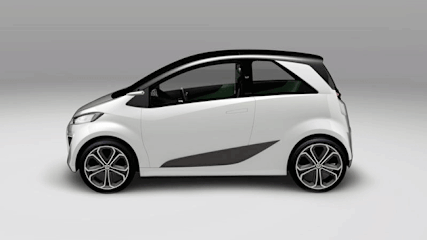
Lotus set to launch Ethos city car
Read the article
By Neil Dowling · 02 Aug 2011
Following the lead of BMW and Aston Martin, Lotus has designed a concept three-door hatch that is less than 3.5m long and will have an innovative electric drive train.
It says the car, called the Ethos, could be ready for sale as early as 2013. It was the sixth car shown by Lotus at this year's Geneva motor show and despite its sales potential, was basically overlooked by the public as they became dazzled with Lotus' other sports-car offerings.
The Malaysian-owned but English-based niche-model sports-car maker could call on its parent, Proton, to help build the car. It could even become powered by a small petrol engine for Malaysia and other markets, and with the Lotus-developed three-cylinder petrol generator and electric motor hybrid system for a more exotic version for emission-sensitive markets.
Though Lotus Cars group PR manager Alastair Florance says it's still a concept, the car features significantly at the company's head office in Norfolk, UK.
"But this is not the car shown at the show with a Proton badge - that is a completely separate car,'' he says.
"The Ethos can make it to production in about 2013 - but we haven't made the final call on that.
"It is shown as a concept with a hybrid power train using the new Lotus-designed system of a range-extender petrol engine and an electric motor. But that's just one possibility. It could have a small petrol or diesel engine instead of the hybrid.''
Lotus' 1.2-litre three-cylinder petrol engine - which in this case is made by Fagor in Spain - is specifically designed to act as a generator for the lithium-ion battery pack. It does not drive the wheels and therefore can be located anywhere in the car - front, back, under the seats and horizontal or vertical.
"The range extender is for applications where the car is driven for long periods,'' Mr Florance says.
"Perhaps we would have an electric-only system, with a plug-in charger, for city purposes where it doesn't need the extra weight and complexity and expense of the petrol engine.''
The Ethos concept has a range of 60km as a full electric car, but up to 500km with the range-extender system. The engine is designed to run on varying fuels, including ethanol and methanol.
In electric mode, it is as quick as most other traffic. It can accelerate to 100km/h from rest in nine seconds and top speed of 170km/h. With the range extender engine in use, its 54kW/240Nm generator will charge the batteries to provide sufficient energy to allow the car to cruise at 120km/h.

My 1967 Mark II Lotus Cortina
Read the article
By David Burrell · 25 Jul 2011
Then go and win races on a Sunday and sell, sell, sell the road-going versions to all manner of punters on a Monday.This is exactly what Ford did on 1962 when it released the Cortina Mark I. Colin Chapman at Lotus race cars got the contract to work on 1000 of them for homologation for Group 2 touring car racing in the UK and Europe. Ford would then sell them through its dealer network.The folks at Lotus proceeded to install all manner of mechanical upgrades and technical wizardry to ensure these cars went fast and were capable of winning races. Then to give themselves an additional advantage Ford and Lotus enticed some the best in the world to drive them. Open wheel heroes such as Jim Clark, Jackie Stewart and Jackie Ickx all strapped into the Fords. Its light weight and agile handling meant these Formula One jocks and others won, and won often. And so the legend was created.To the uninitiated the Mark I cars look like the poverty pack models. But to those who know the discreet yellow and green `Lotus' badges on the rear guards and the green stripe along the flanks are the giveaways.When Ford introduced the restyled Mark II Cortina in 1967, the Lotus version also debuted. Mark II Lotus Cortinas are rare in Australia. "I estimate there are about fourteen", says David Fotheringham, the owner of the one featured here.David's car is build-number 331 of 1967. It was imported by Geoghegans Sports Cars in 1971 from the UK, and David is the third owner in Australia. In all those years only 57,100 miles have been put on it.The Cortina has not been restored in any way, however its iconic ermine white paint was given a re-spray sometime in the seventies and the engine enlarged. The front bumper has also been split, Mark I style. Nothing else has been touched and David intends to keep it that way."There's no need to make any changes. The car is in wonderful condition and I like the patina of its age." he observes.Open the bonnet and you are immediately confronted with the double overhead cam shaft 1558 cc motor filling the engine bay. Out to the side are strapped two Weber DCOE 40s carbies. It all looks very efficient and effective. The power output is 140 BHP, propelling the car a top speed of over 100 mph.This not a trailer queen car. "I take it on club runs about eight or nine times a year", David says. Not content with the Lotus, David also has 1967 GT Cortina and an unusual 1966 V4 Ford Corsair. So it's no surprise to know he is the President of the Hunter British Ford Club.David explains his passion for smaller Fords. "My first car was a 1967 Cortina GT. I bought it in 1977 and sold it a few years later. Then in 1995 I had an opportunity to buy it again, but before I could close the deal the car was stolen and just disappeared. So I decide to buy a GT anyway. And that got me started".




